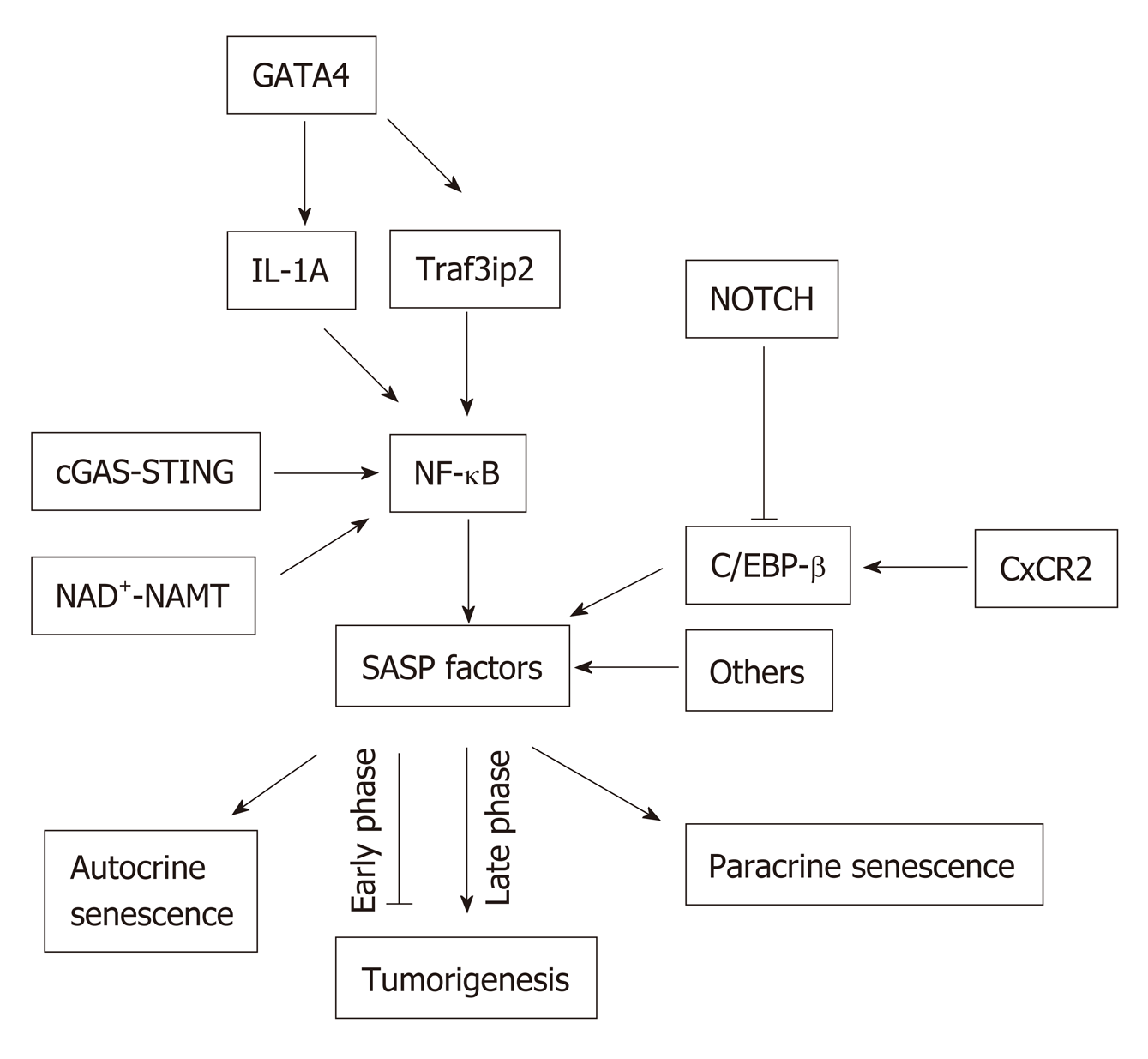Copyright
©The Author(s) 2019.
World J Gastroenterol. Sep 14, 2019; 25(34): 5069-5081
Published online Sep 14, 2019. doi: 10.3748/wjg.v25.i34.5069
Published online Sep 14, 2019. doi: 10.3748/wjg.v25.i34.5069
Figure 1 Stress-induced senescence.
Both external and internal stresses can induce DNA damage and the activation of p16INK4A and/or p15INK4B. DNA damage can activate p53 ataxia telangiectasia mutated (ATM) and ATM and RAD3-related (ATR) pathway. Activated p53 induces p21 Cip1 expression. Expression of p21Cip1 can also be regulated by p53-independent mechanisms. The Cyclin dependent kinases activate Rb but are inhibited by p15INK4B/ p16INK4A and p21Cip1 which leads to cell cycle arrest and senescence. The senescent cells express senescence-associated secretory phenotype (SASP). The SASP factors may induce senescence in neighboring cells in a paracrine fashion. ATM: Ataxia telangiectasia mutated; SASP: Senescence-associated secretory phenotype.
Figure 2 Senescence-associated secretory phenotype signaling pathways.
Nuclear factor kappa light chain enhancer of activated B cells can be activated via multiple signaling pathways such as the GATA binding protein 4, cyclic GMP-AMP synthase-stimulator of interferon genes, and nicotinamide adenine dinucleotide -nicotinamide phosphoribosyltransferase NAD+-NAMT pathways, which lead to the expression of senescence-associated secretory phenotype (SASP) proteins. SASP can be positively regulated through C-X-C motif chemokine receptor 2, or negatively by NOTCH via CCAAT-enhancer-binding proteins. SASP can induce senescence in both autocrine and paracrine manners. SASP can be anti-tumorigenic in the early phase of senescence, but can be pro-tumorigenic in the late phase of senescence. NF-κB: Nuclear factor kappa light chain enhancer of activated B cells; GATA4: GATA binding protein 4; cGAS-STING: Cyclic GMP-AMP synthase-stimulator of interferon genes; SASP: Senescence-associated secretory phenotype; CXCR2: C-X-C motif chemokine receptor 2; C/EBP: CCAAT-enhancer-binding protein.
- Citation: Huda N, Liu G, Hong H, Yan S, Khambu B, Yin XM. Hepatic senescence, the good and the bad. World J Gastroenterol 2019; 25(34): 5069-5081
- URL: https://www.wjgnet.com/1007-9327/full/v25/i34/5069.htm
- DOI: https://dx.doi.org/10.3748/wjg.v25.i34.5069










